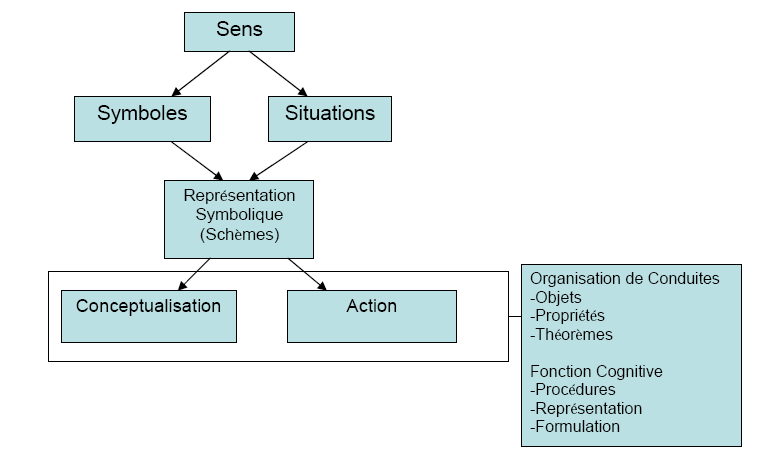Piaget places great emphasis on the adaptation process and balancing and unbalacing whereas Vygotsky defends that language, socialisation and symbolisation are the central processes of cognitive development. Influenced by the theories of Vygostky and Piaget, Gerard Vergnaud developed the theory of conceptual fields to argue that schemes are the focus o cognitive development. According to Veergnaud, cognitive development is like a great repertoire of schemes, which constitute different aspects of human activity which are given rise through experiences to adapt to situations. Experience involves a gap between the activities, help from others, and an analysis of the different stages of the activity. Thus, it is through the development of organisational forms of activity (actions, skills, interactions, language activities) that the schemes are built and modified, becoming cognitive development.
A scheme is universal and can give rise to different sequences of action, information gathering and control, according to the characteristics of each situation. It is not the behaviour that is invariant, but the organization of behaviour (Vergnaud, 1998, p. 172).
A scheme is made of 4 componentes:
1- goals and anticipations
2 -action rules and control
3 - Operational Invariants ( Invariantes opératoires)
4 - Possibilities of Action-Inference (reasoning to figure out thr rules and anticipations).
Operational Invariants of a scheme are responsible for the recognition of the relevant elements of a situation. In short, whenever you come across something weird which takes a while to sink in, it's you operational invariants taking stock of the situation and figuring out what that is. Except that it's used to understand how children perceive algebra. The operational invariants can be divided in:
a) Propositions - susceptibe to being true or false;
b) Prpositional Functions - properties and relations of algebra.
c) Arguments - the object.
The way that Vergnaud sees schemes, it's possible to draw an analysis of the way that individuals handle a new situation and they form concept. As they start to master the dimensions of a concept, they start to make sense of it. A concept is gradually learned when the individuals amplify the possible ways of representation and relationships with other different situations. A concept doesn't exist on its own, but rather is part of a network of concepts, which Vergnaud calls conceptual field.

No comments:
Post a Comment